This site is part of various affiliate programs. Links may give us a small compensation for any purchases you make, at no additional cost to you. Please read the disclaimer policy for full details.
Within a couple of years of buying your Samsung TV, it starts showing purple spots.
This is a very common occurrence for Samsung TVs, so you are not alone, but unlike others who get this problem, you don’t want to have to buy an expensive new TV, but instead want to fix the one you have.
Luckily, it’s completely possible to fix Samsung TV purple spots by following the full and complete steps in this guide.
I’m confident that you’ll be able to fix your TV and get it back up and running again without needing to buy an expensive new one.
Let’s get started!
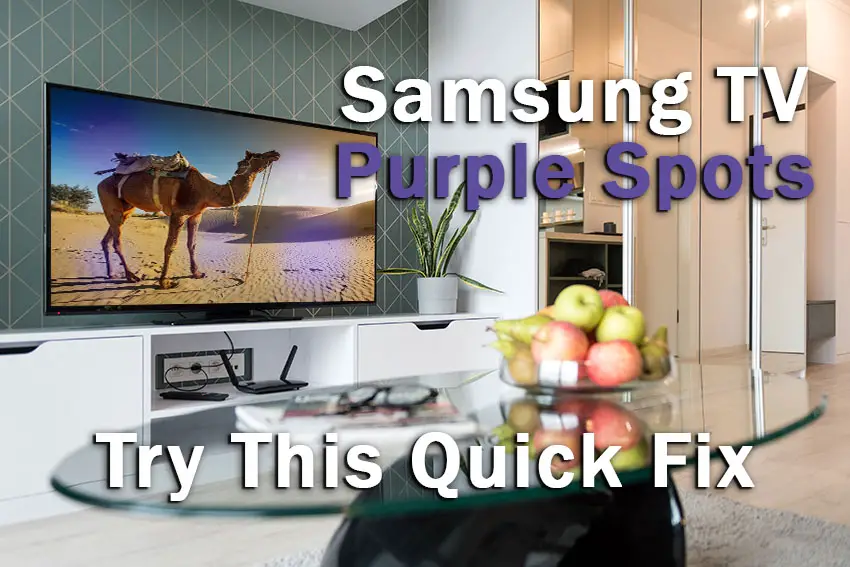
Samsung TV Purple Spots
Fix Samsung TV purple spots by cold booting your TV to reset it. With your TV switched on, unplug it and wait for 30 seconds, then plug back in and it should work as normal.
This works for nearly everyone to fix their TV’s purple spots, but if it hasn’t worked for you, then we can try a handful of hardware and software fixes to diagnose and treat the problem.
Let’s start with a few basic steps that you might have overlooked before we get into the more in-depth fixes.
You can watch a quick overview of each fix in the video below, with more detail following in this article.
1. Reset Your TV
With modern electronics, it’s possible that the purple spots on your Samsung TV is caused by something stuck in your TV’s flash memory, which can also be a problem if you are seeing white spots on your TV.
Power cycling or cold booting your TV will clear out any issues with non-permanent memory and reset your main board without losing your personal settings.
This is quick and painless and won’t cause you to lose any of your saved settings.
- Switch off and unplug your TV.
- Hold down the physical power button on the TV for at least 15 seconds.
- Wait for at least 30 minutes for any residual power to drain from the TV’s capacitors (which are capable of storing charge for several minutes).
- Plug your TV back in and try switching it on. You should see a red light if you have been successful.
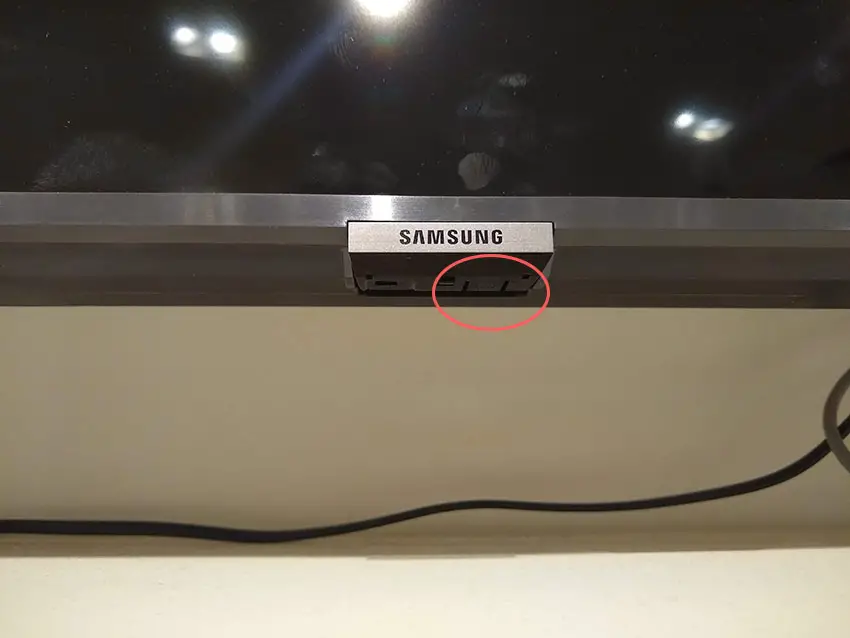
Make sure you do wait for the full 30 minutes before plugging your TV back in – you would be surpised how long the components within your TV can hold charge, and you want to make sure it has fully reset.
Although this seems a very basic step, don’t overlook it because in the vast majority of cases a simple soft reset fixes most issues.
Most people will now have their TV fixed and back up and running. If this isn’t you, then we’ve got a few more basic fixes to try before getting into the hardware fixes.
2. Reposition the HDMI Cables
There’s a strong possibility that a poorly seated cable is creating signal noise which is displaying as a purple spots.
This comes down to either a:
- Faulty HDMI cable with a break in it
- Damaged HDMI port with broken pins
- Poor HDMI connection where the cable and connector are not fully making contact
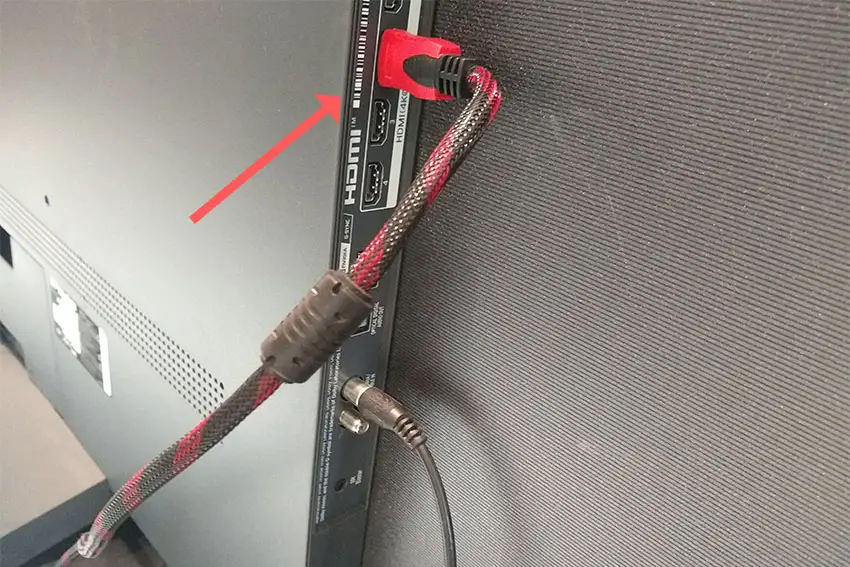
To check your HDMI and other cables:
- Switch off your TV.
- Remove any HDMI or other physical cables connected to the back of your TV.
- If you have any compressed air, use that to clean the contacts both of the cable and in the connector on the TV. If you don’t have compressed air, then blow gently on them.
- Firmly push the cables back into their slots on the TV.
- Switch your TV back on again.
It that hasn’t fixed the problem, then try using a different HDMI input. Most TVs have 3 or 4 HDMI ports.
If you have one that is on a different part of the TV then that would be the best one to try, as it this should have a separate connection to the TV’s main board.
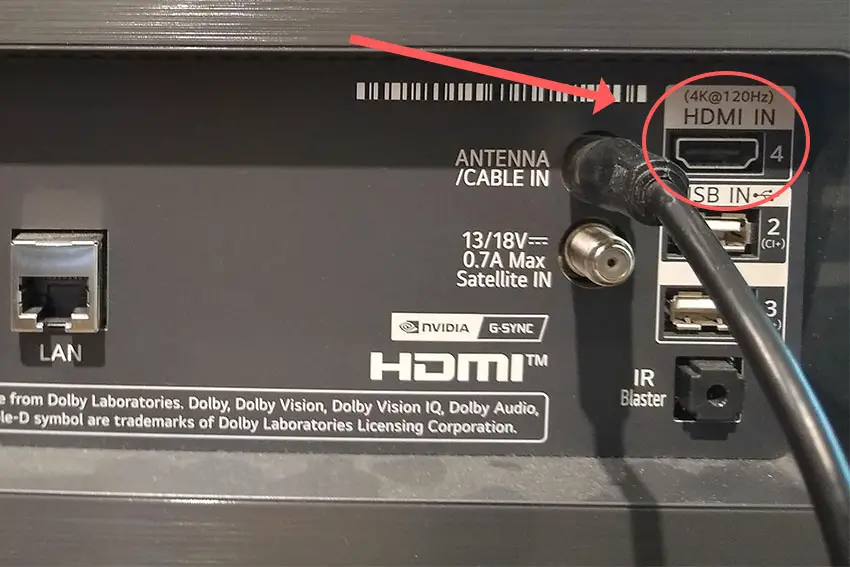
Plug you HDMI cable into the new port, note the number next to it, then choose this HDMI input on your TV, by using the Input or Source button on your TV remote or the Input or Menu button on your TV itself.
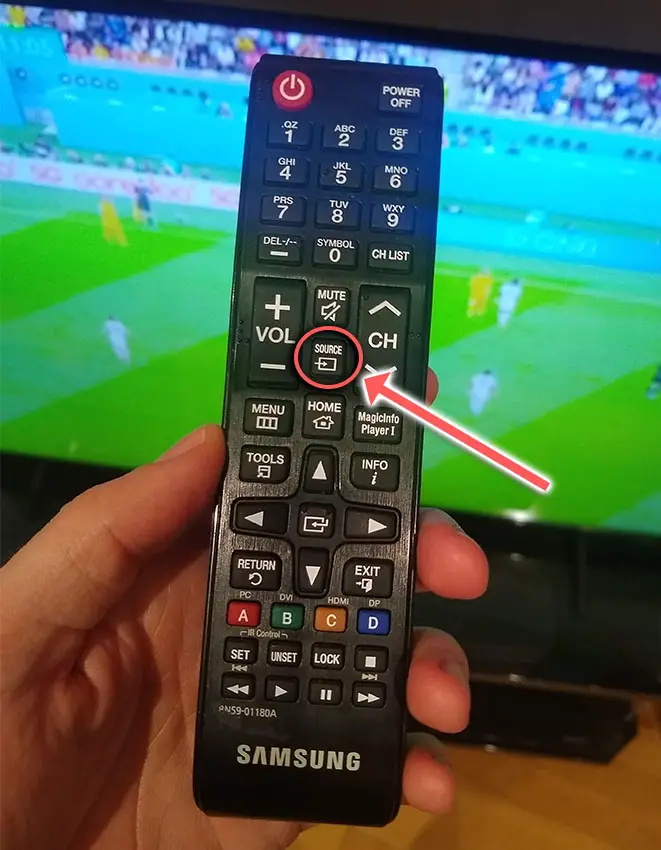
You can also try removing all external devices, including those connected by Bluetooth and any coaxial or signal cables, so that the TV only has a power cable going into it.
When you turn your TV on, this means the screen will be black as it is not receiving any picture, potentially making it tough to see the purple spots.
Pull up the on-screen menu to see if the purple spots are still there. If it is, this means that your external connections are fine and the problem is located within the hardware of your TV.
If the purple spots have gone, then try re-seating your HDMI and other cables one by one, until you find the damaged cable that needs replacing.
3. Run a Firmware Update
Software and firmware issues have been known to cause problems with the display on Samsung TVs.
As with any product, you should ensure that you have updated your TV’s firmware to the latest version, even if it is new.
Smart Samsung TVs support auto-updating of firmware, but you can’t assume that this is turned on for you.
To check that auto-updating is on for firmware / software on your Samsung TV:
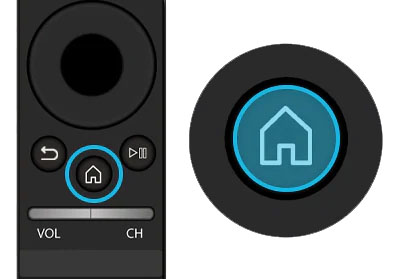
- Press the Menu or Home button on your remote and go to Settings.
- Click Support.
- Then Software Update.
- Agree to any terms and conditions that may popup, then switch on Auto Update.
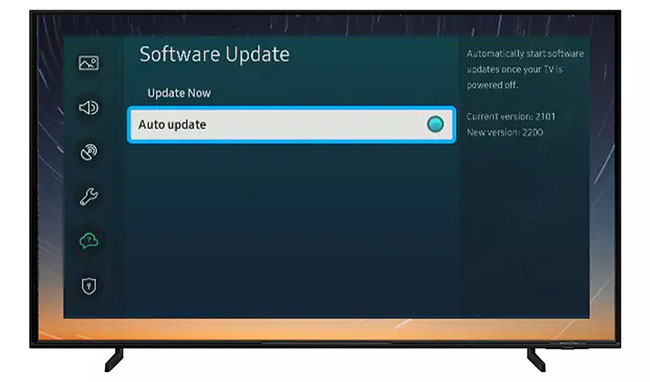
For older Samsung TVs, you’ll need to update the firmware by USB. To do this:
- Press the Menu or Home button on your remote and go to Settings.
- Go to Support.
- Then Contact Samsung or About This TV.
- Take note of the Model Code and Software Version currently installed.
- Go to Samsung’s Support site and enter your model number.
- Select Manuals & Downloads and look for the newest firmware version.
- If this Firmware Version is later than the version you noted was installed on your TV, then download it, along with the Firmware Update User Manual which will give you full instructions on how to install your update.
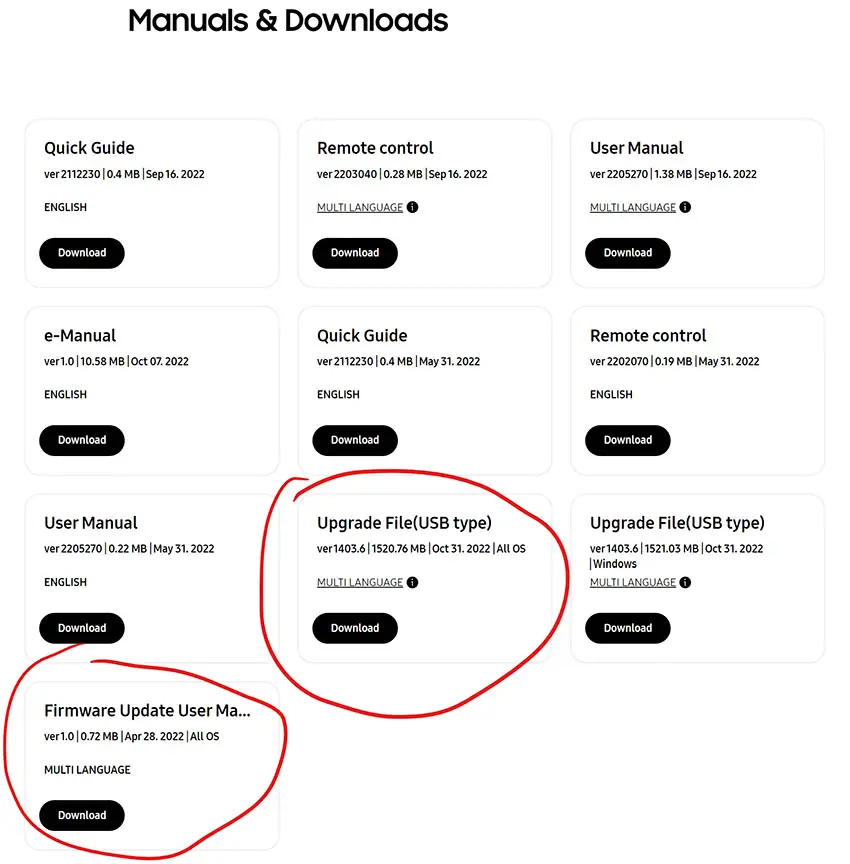
4. Update Your Picture Settings
Most Samsung TVs have an option to change the color temperature or other aspects of the picture.
Using your remote control, navigate to the Home screen, then Settings and go to the Picture menu.
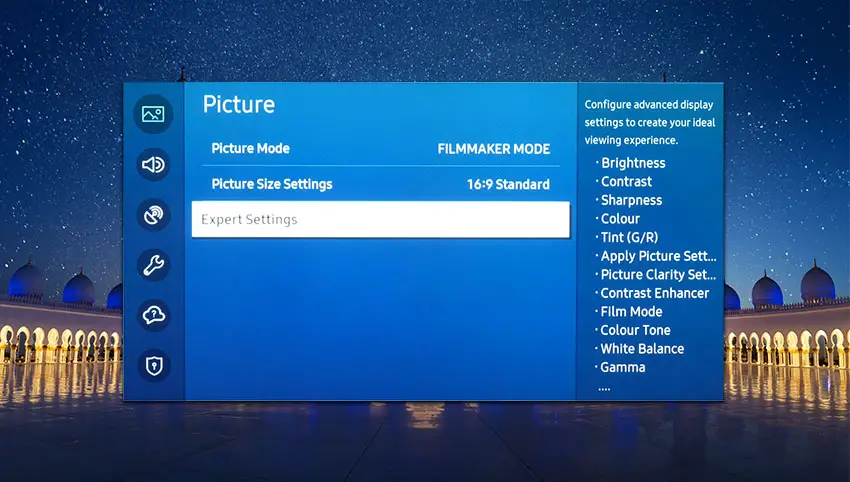
You can try the various picture modes to see if they fix the purple spots, and if not, then go to Expert Settings.
This allows you to change the color space of your TV and hopefully will let you change it enough to totally remove the purple spots.
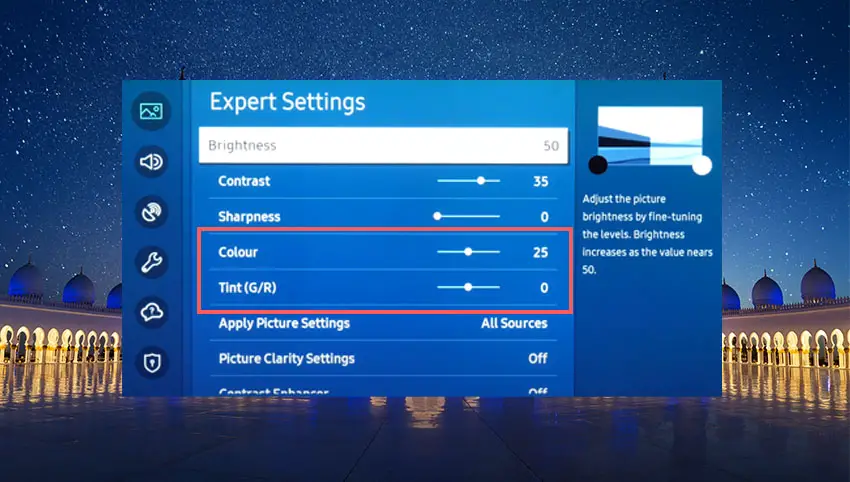
You can use the Color and Tint options, and you can also try changing the Gamma and White Balance, and hopefully you will be able to get a decent picture without any color tint.
5. Samsung TV Factory Reset
Returning your TV back to its factory settings is a more extreme step, as it will delete any personalization features, downloaded apps or connected devices, but it’s always worth a shot when other methods haven’t worked.
To factory reset a Samsung Smart TV:
- Press the Menu or Home button on your remote and go to Settings.
- Then General & Privacy.
- And Reset.
- Enter your PIN, which by default is 0000 (four zeroes) for Samsung.
- Then select one final Reset in the popup.
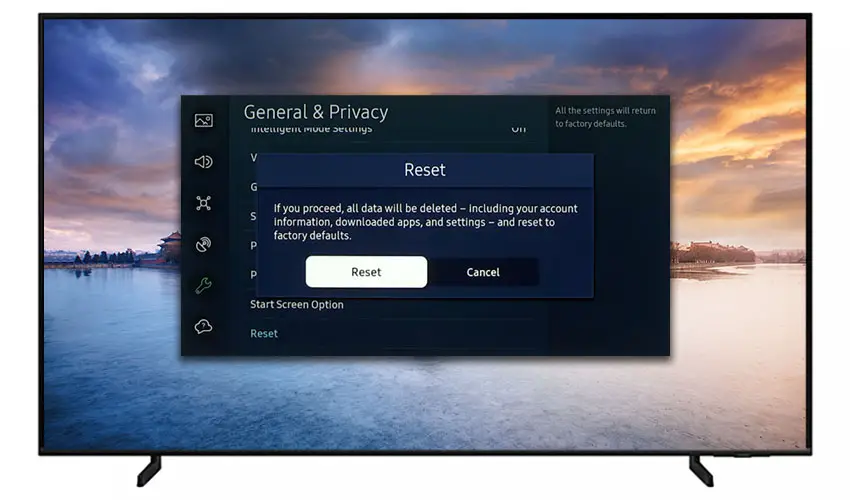
Samsung have provided a video of these steps in the video below.
If you don’t have your remote, then you can get to the same menu items by using the physical Menu button that is most likely underneath your Samsung TV’s logo, next to the Power button.
Press this and use the Volume + and – or Channel + and – depending on model to follow the steps above.
That should solve most purple spot issues without you having to delve into hardware problems, but just in case you still have a problem then this will be caused by the backlights, which will need replacing.
6. Replace Your Samsung’s Backlights
Purple spots are very common on TVs older than two or three years. This is because of the design of the LEDs used in the backlight and the fact that they can easily burn out.
Samsung TV backlight panels use blue-light LEDs as their base, with a phosphor yellow coating over the LED.
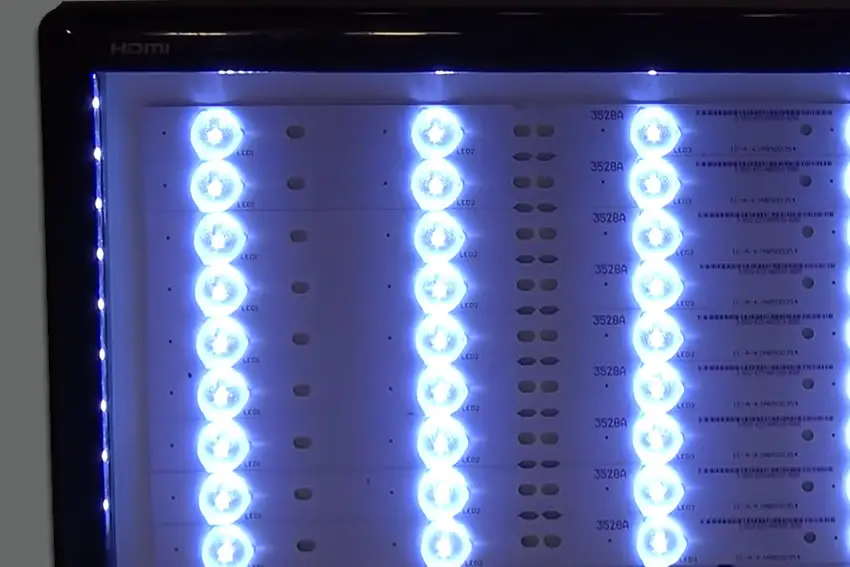
The blue light shining through the yellow phosphor creates white light, which is what you see on a correctly functioning TV.
But after a couple of years, the phosphor can burn off, meaning that blue light shines through unfiltered, giving your screen purple spots where individual LEDs have failed.
These LEDs must be replaced, but luckily this is not a terribly expensive job, although it does require some work on your part.
If you’re not comfortable totally disassembling your TV, then now is the time to get a professional in, or to get a new TV.
Backlights on modern Samsung TVs come in LED strips of varying lengths. Older models used lengths that spanned the entire frame of the TV, but due to cost savings, more recent TVs use a set 16″ or smaller LED strip which is connected in series for each row to span your TV.
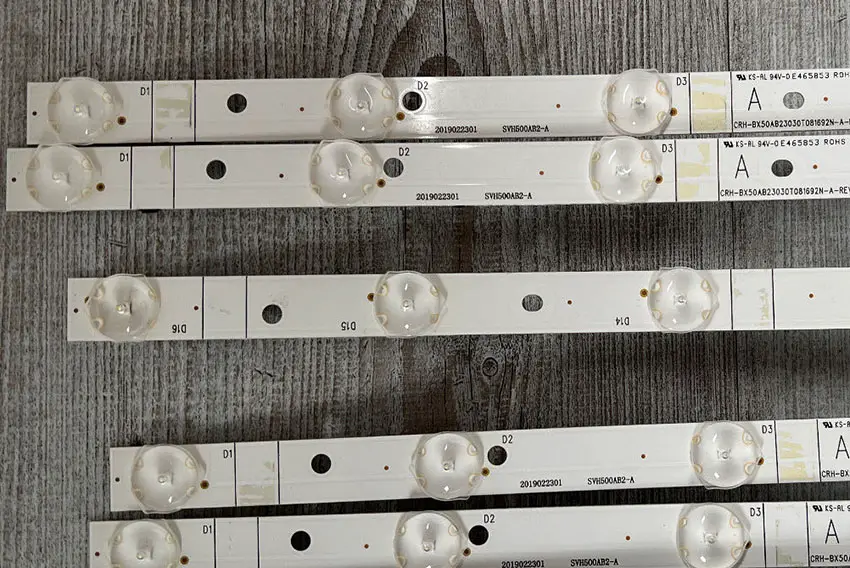
You can get replacement LED strips quite easily from eBay – just put in your TV model number to be sure you are buying the correct type.
If you have a TV backlight tester to hand, then you could get away with testing every backlight strip in your TV individually and only replacing the broken strips, but it’s a lot less work to just replace every backlight and skip the testing, particularly given the relatively low price of LED backlights.
See the full process for replacing backlights below. This isn’t for the faint-hearted, but it will save you a considerable amount of money from either professionally repairing or replacing your TV.
To prevent LEDs burning off their phosphor layer in future, make sure you do not set your backlight to 100% brightness. The phosphor layer is destroyed by thermal degradation of the LEDs, caused by a too bright backlight setting. Reduce this to the lowest level you are comfortable with to prolong your backlight’s life.
Samsung TV Support and Warranty
You can check your current warranty status at Samsung’s warranty site.
Unfortunately, warranties typically only last a year unless you have already paid to extend it.
Although you are unlikely to see purple spots on a Samsung TV under one year old, this can happen. If so, return your TV under warranty and get it fixed.
You can also try to contact Samsung support directly to see if they can offer any help.
You can use the Samsung support site to help diagnose your problem, but if you are at this stage, then you are better off calling them direct on:
- 1-800-SAMSUNG (726-7864)
They are in office 7am – 12am EST, 7 days a week, but their automated chatbot is available on their site 24/7.
Even if Samsung won’t fix your TV, they might still offer you a discount off a future model if you pester them hard enough! Always worth a try!
So, How Do You Fix a Samsung TV Purple Spots?
If you’re seeing purple spots on your Samsung TV, then to fix it:
- Fully unplug your TV.
- Reposition your HDMI cables.
- Update your TV’s firmware.
- Change your picture settings.
- Factory reset your TV.
- Replace your TV’s backlights.
If you still are having problems with your TV, then try Samsung support, but otherwise you will be looking at a new TV.
Read More:
Samsung TV half black screen simple fix
Samsung TV blue tint? Try this easy fix
Samsung TV horizontal lines on screen – Fixed
Samsung TV pink screen? Try this
Samsung TV green screen simple fix

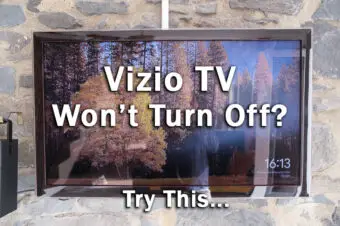


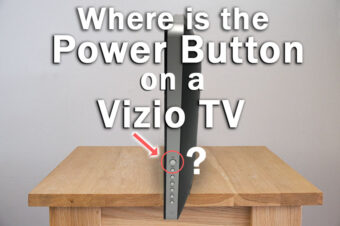
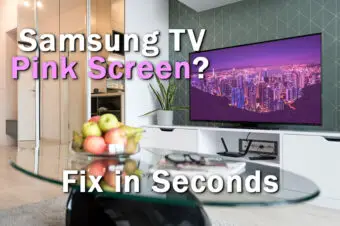
Leave a Reply